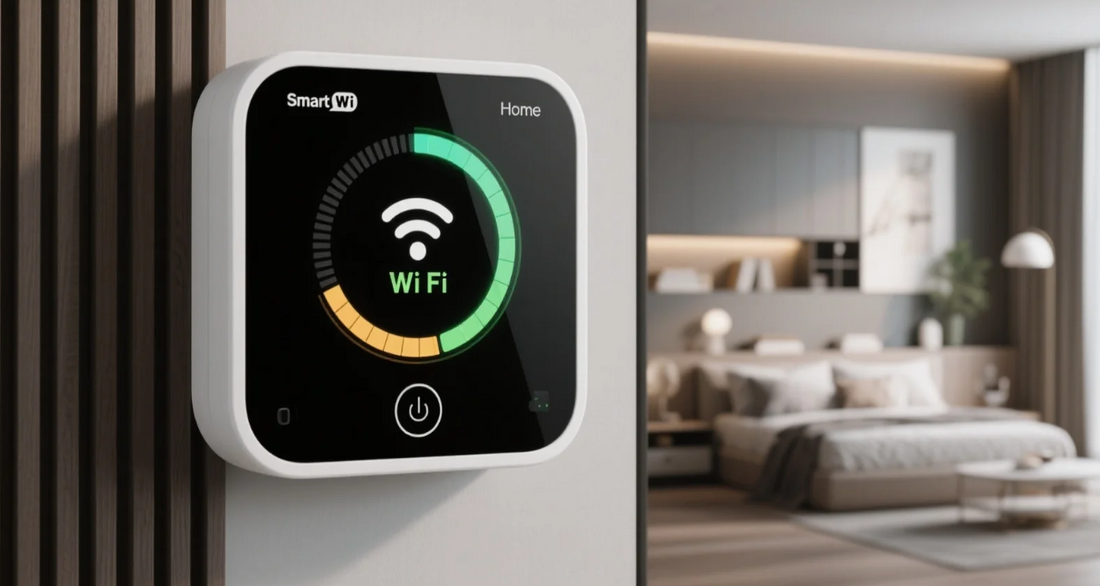
Energy Monitor in Smart Homes: Save Power & Control Usage
Share
In the smart‑home era, a energy monitor enables homeowners to track electricity use instantly and make smarter decisions — all right within the first 100 words. In this article, real value is offered by explaining how energy monitoring works in smart homes, outlining key benefits, practical setups, and insights on choosing the right solution. Transition words like “moreover,” “however,” and “in addition” are used to maintain flow. The content is professional and solves real problems for smart‑home users.
What Is a Smart‑Home Energy Monitor?

A energy monitor is a device installed typically at the home’s electrical panel. It reads consumption via CT clamps or built‑in sensing hardware, uploads data over Wi‑Fi, and provides real‑time feedback through an app or dashboard. Users can visualize usage patterns, check costs, and estimate emissions. Homeowners who engage with these systems often reduce energy use meaningfully.
Key Benefits for Smart‑Home Users
Real‑Time Consumption Insights
With real‑time data displayed on mobile devices, homeowners can immediately see power surges or idle wastage. Studies reveal that real-time feedback typically reduces energy use by 3‑15 % depending on user engagement.
Device‑Level Tracking & Disaggregation
Some monitors, like Sense, use machine learning to identify individual appliance energy signatures, even without separate sensors. This technique—non-intrusive load monitoring—helps pinpoint high-usage devices and phantom loads. However, accuracy varies by model.
Alerts, Reports & Automation <a name="alerts"></a>
Custom alerts can notify users about unusual usage, such as a fridge left open or a device stuck in standby. Monthly or weekly reports break down costs and suggest efficiency tips. Moreover, integration with smart systems allows automation—e.g. thermostats adjusting based on real-time load.
How It Works: Technology Behind Energy Monitors

A typical energy monitor uses inductive CT clamps around mains wires or circuit conductors. The device measures current and voltage, computes power and power factor, then securely transmits data over your home Wi‑Fi network. Some systems add machine learning for appliance detection (NILM). Others integrate with cloud platforms to support dashboards, insights, and remote control.
Installation & Setup in a Smart Home
Turn off main power; ensure safety first.
Attach CT clamps per instructions.
Connect the monitor to your Wi‑Fi.
Install the companion app and register your device.
Calibrate preferred settings and alert thresholds.
Installation is generally DIY‑friendly, but professional help is recommended when unsure.
Use Cases in Smart Home Automation
HVAC & Smart Thermostat Integration
When an energy monitor works with a smart thermostat, HVAC usage can be optimized automatically. For instance, the thermostat may reduce heating when energy use peaks or trigger alerts when filters need replacing. Smart automation ensures comfort while minimizing waste.
Appliance Management & Phantom Load Detection
By showing which appliances draw power even when off, users can eliminate standby consumption. Many report cutting bills by half simply by unplugging unused devices such as gaming PCs, old routers, or chargers.
Solar, Battery & Home Grid Coordination
Pairing an energy monitor with solar panels or home battery systems allows tracking of both production and usage. Homeowners can shift high-load tasks to times when solar generation is high, thereby avoiding peak tariffs. This coordination improves efficiency and reduces grid dependence.
Marketing Spotlight: EdgeAnt Energy Monitor Solutions

EdgeAnt offers a range of white‑label energy monitor devices ideal for smart‑home integrators and service providers. Their models—such as the 3 × 300 A clamp version—support whole‑home and circuit-level monitoring, integrate with Tuya, and enable both solar/net metering and home automation.
EdgeAnt’s platform provides turnkey white‑label branding, app integration, and cloud analytics—making it easy for OEMs or utilities to deploy comprehensive energy monitor services under their own brand. The affordability (starting around $89 USD) combined with scalable architecture makes it appealing for providers.
Choosing the Right Energy Monitor for Your Home
When comparing options, consider:
Clamp capacity & circuit count (single vs multi‑phase; EdgeAnt offers 3×300 A or multi‑circuit sensors).
Detection resolution (seconds vs minutes) and machine‑learning features.
Integration with smart thermostats, solar panels, batteries, or voice assistants.
Security (encrypted Wi‑Fi, firmware updates, privacy policies).
Price‑to‑value varies: some users save $100/year or more through improved awareness.
Privacy, Security & Best Practices
Because energy data can reveal behavior patterns, privacy safeguards are essential. Stand‑alone in‑home systems are safer than those sending data externally. Look for devices with strong encryption, local control options, and transparent data policies. Firmware updates should be supported.
Additionally, schedule occasional audits of device logs, update alert settings, and recalibrate sensors annually for accuracy.
Conclusion
By installing a good energy monitor in a smart‑home setup, homeowners gain real‑time transparency, reduce waste, automate usage, and cut costs—while enhancing convenience. Platforms like EdgeAnt, which offer scalable white‑label solutions, make professional energy management accessible and budget‑friendly. Moreover, with proper privacy safeguards and smart automation, energy monitoring supports sustainable, intelligent living.
FAQ
Q1: Can I install an energy monitor myself?
A1: Yes—most are DIY‑friendly if you’re comfortable working near the panel. Otherwise, hire a qualified electrician for safety.
Q2: Will it save on my electric bill?
A2: Yes. Users often see 3–15 % savings within a few billing cycles by optimizing usage based on insights.
Q3: Does it work with solar or batteries?
A3: Many devices support measuring solar exports and imports. EdgeAnt models explicitly support solar/net‑metering integration.
Q4: Are there privacy risks?
A4: Potentially, if data is sent to third parties. Choose vendors with encrypted transmission and clear privacy policies to minimize exposure.
Q5: How quickly does appliance recognition improve?
A5: Platforms like Sense gradually learn over weeks; some may struggle with low‑watt devices but improve over time.